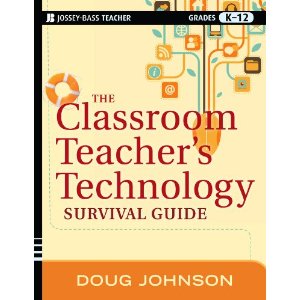The blind men and the elephant
 Saturday, December 8, 2012 at 07:47AM
Saturday, December 8, 2012 at 07:47AM
One of the things I really love in my job is representing the technology department at district-wide student council meetings. Usually about once a year, I get invited to participate in a dialog among representative student council members from each of our secondary schools, the superintendent, and school board members. The students are never shy about what they love, hate, and hope about technology. The most recent meeting was held yesterday.
Students in our district also serve on the district's technology advisory committee and a couple students are in both groups. Early in the meeting, I complimented the students who serve on the advisory committee on how important their role is and how valuable their input had been over the years. A school board member (who had also served on the tech advisory committee) asked me to explain what that group did.
Now officially being a long-winded old fart, I began the explanation by mentioning the old story of the blind men and the elephant and how it illustrates how no one person can see every piece of a really big thing - like technology use in schools. And that is the reason why a group with lots of different perspectives makes better decisions than a single individual.
The mention of the story drew blank looks from all two dozen kids and a couple school board members. "Wait, everybody knows this story, right?" Heads shook. I gave my version and on the meeting went.
When I got back to the office, I asked my secretaries if they knew the blind men and the elephant story. None of them did. For the rest of the day I asked everyone I met if they knew the story and its meaning.
My assumption about a common cultural literacy came crashing down.
So, assuming that our little community isn't some odd island of ignorance, I am sharing my favorite version of the fable below. This poem and the illustration above are from the <http://www.noogenesis.com/pineapple/blind_men_elephant.html>
Enjoy...
THE BLIND MEN AND THE ELEPHANT
John Godfrey Saxe's ( 1816-1887) version of the famous Indian legend
It was six men of Indostan
To learning much inclined,
Who went to see the Elephant
(Though all of them were blind),
That each by observation
Might satisfy his mind.
The First approach'd the Elephant,
And happening to fall
Against his broad and sturdy side,
At once began to bawl:
"God bless me! but the Elephant
Is very like a wall!"
The Second, feeling of the tusk,
Cried, -"Ho! what have we here
So very round and smooth and sharp?
To me 'tis mighty clear
This wonder of an Elephant
Is very like a spear!"
The Third approached the animal,
And happening to take
The squirming trunk within his hands,
Thus boldly up and spake:
"I see," quoth he, "the Elephant
Is very like a snake!"
The Fourth reached out his eager hand,
And felt about the knee.
"What most this wondrous beast is like
Is mighty plain," quoth he,
"'Tis clear enough the Elephant
Is very like a tree!"
The Fifth, who chanced to touch the ear,
Said: "E'en the blindest man
Can tell what this resembles most;
Deny the fact who can,
This marvel of an Elephant
Is very like a fan!"
The Sixth no sooner had begun
About the beast to grope,
Then, seizing on the swinging tail
That fell within his scope,
"I see," quoth he, "the Elephant
Is very like a rope!"
And so these men of Indostan
Disputed loud and long,
Each in his own opinion
Exceeding stiff and strong,
Though each was partly in the right,
And all were in the wrong!
MORAL.So oft in theologic wars,
The disputants, I ween,
Rail on in utter ignorance
Of what each other mean,
And prate about an Elephant
Not one of them has seen!









Reader Comments (4)
"My assumption about a common cultural literacy came crashing down."
Doug, it speaks well to your long standing engagement of student in your planning and guiding team. It seems so obvious to say "What do the kids think?" but too few CIO/CTO's actually do ask regularly. Surveys are punctuated views and not elaborated discussions within which one can work to truly understand.
Another example of how you model leadership strategies.
Hi Doug. The same cultural assumptions became very clear to me when I started doing a picture book project with 8th graders a number of years ago. I start by asking them what some of their favorite childhood stories were, and then I read a few for very young children to start the discussion of why reading aloud to children is so important (these students make picture books to take to an elementary school to read). The number of students who had never heard Mother Goose rhymes or traditional fairy tales astounded me. But, a large number of my students have parents who were not born into western culture, so I realized that it makes sense.
This is a great analogy that I plan to use in the near future - very applicable to technology use, misuse, understanding and misunderstanding.
I think there might also be an additional story to add - the blind man who has spent the most time near the elephant might be the first person to talk to...
Thanks, Gordon. My selfish reason for including students on my advisory group is that often they represent the more progressive views on tech policies - viewpoints that I need to persuade others who are more reactionary!
Doug
Hi Cheri,
And there is soooo much now published in the way of fairytales, folklore, etc. and from so many cultures. All a good thing to be sure, but tough to building a common set of cultural touchstones, I guess,.
Doug